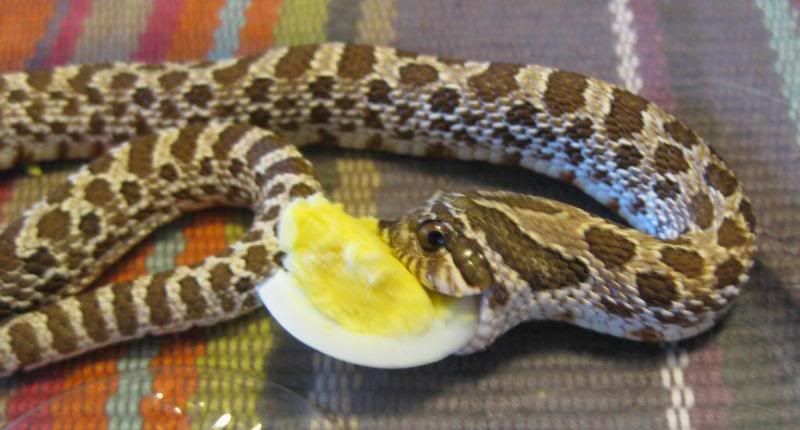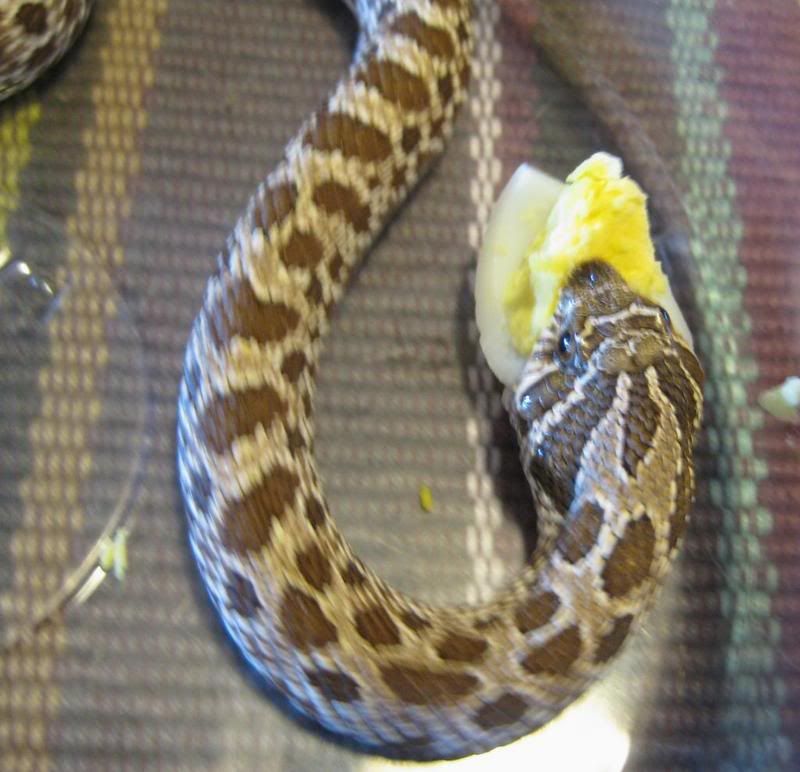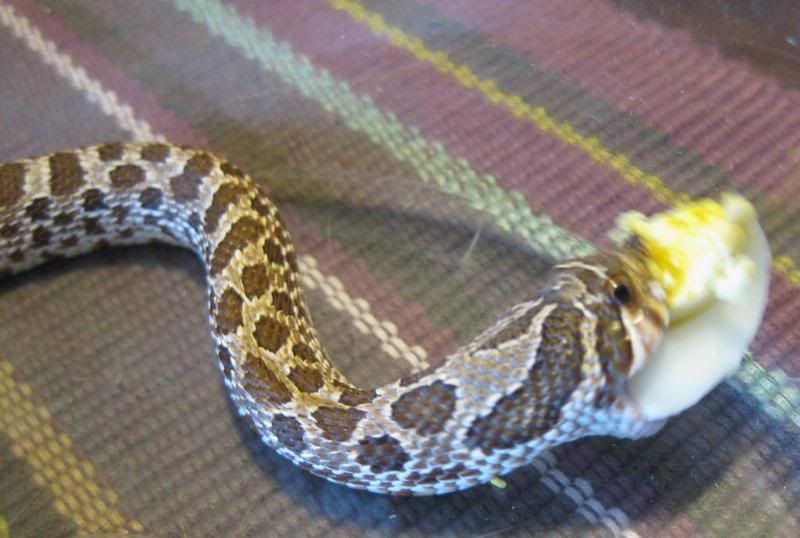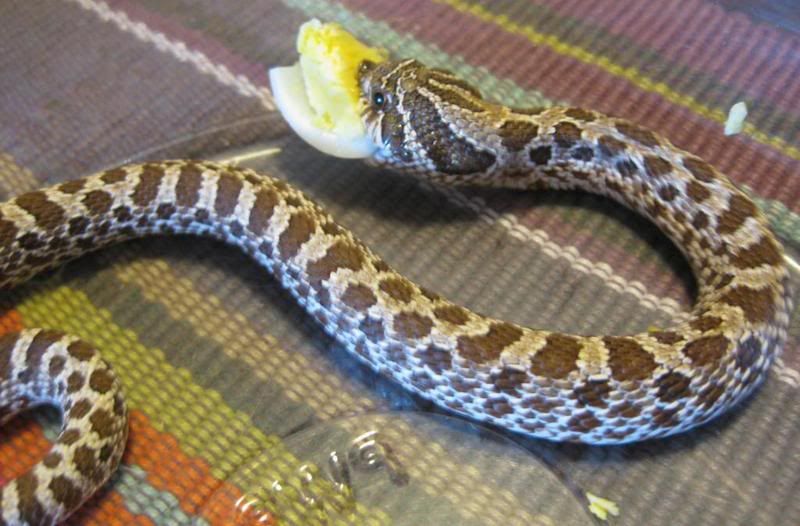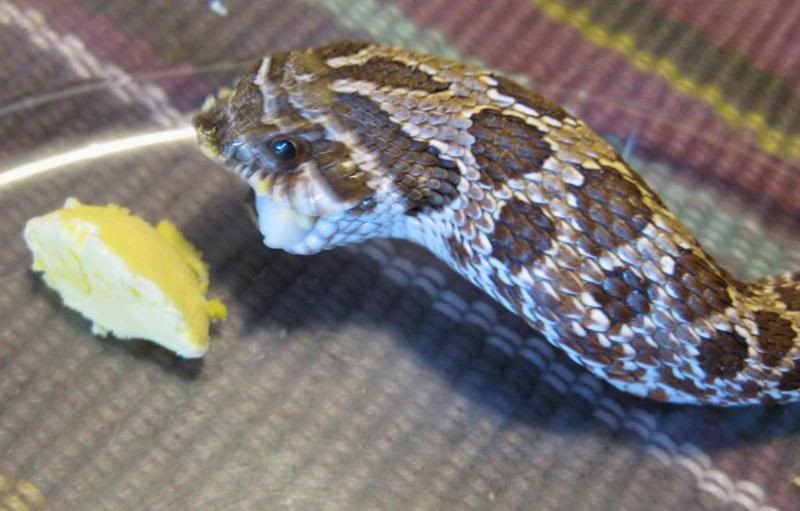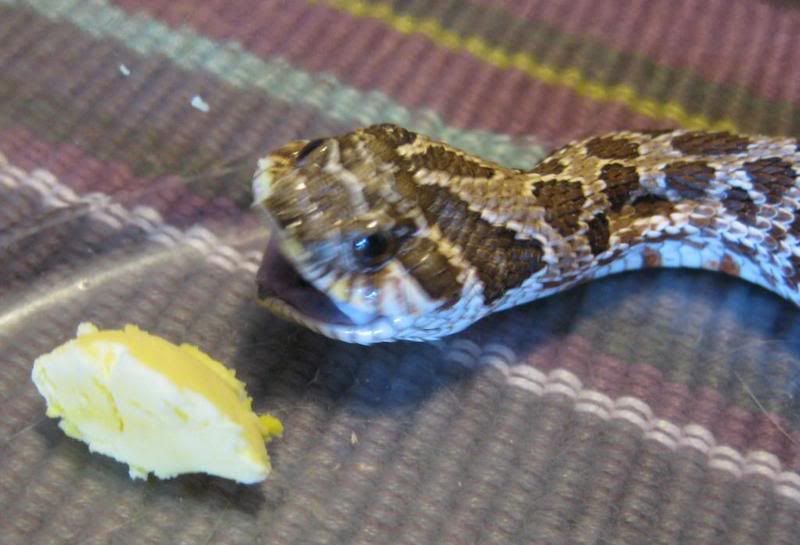Thanks, Troy! I've been a little stressed. Since I have really only kept corns, it is hard for me to know what is normal for Cyrano and what isn't ~LOL~ You're right, in my head I have been comparing him to how my corns are . . . .
You're welcome!

Believe, I've been there too when I got our very first pair of hoggies. They totally baffled, worried, confused and amazed me because I too had only kept Corns and Kings at that point, so their behaviors and attitudes really threw me for a loop. You will find over time that this is what really endears you to hognose as there's just no comparison between them and most other colubrids. This is why they've become my all time favorite snake even though I've kept Corns for over 15+ years.
I've been worried that he has only put on 6 grams since I got him, so when he refused to eat, I started getting worried, thinking he was going to lose weight. Ok, I will stop comparing him to my corns and just accept him

Actually, 6 grams in the short time you've had him is pretty decent weight gain for a male. He might really start to slow down when he hits about 70 grams and then slowly ease into the 90's or 100's. Like I said before, it's not unheard of for male hoggies to go completely off of food for 30-90 days sometimes during non-brumation periods. Sure, he'll lose some weight but as long as you don't really see his body getting to the point of looking bony, he should be fine.
I do find it odd that he seems to digest his food faster than the corns, but grows slower. I guess I thought faster digestion = higher metabolism = faster growth.
Yeah, this aspect had baffled me too. But then again, wait until the non-feeding process takes over when they don't want to eat for an extended period. Then you'll really wonder about how they can go soooo long without food while having that high metabolism.

I have also been worried that he hasn't shed yet (again, thinking of the corns). How often do your younger ones shed, and will it look like corns? Eyes cloudy and scales dull/muted?
The shedding process is pretty much the same although much less frequently. Neonates might shed 3-4 times in the first 2 years and then it gets down to 1-2 times after that depending on their rate of growth. The biggest problem with hognose is like all snakes, they start their shed at the nose. Well, the nose on a hognose is the hardest part for them to get off and it seems like the thickest scale they shed off. Their facial scales, especially around the mouth, are also quite different. As long as they get enough fluids and moisture during this process, it should all come off pretty easily. In the event that it doesn't, then you might need to soak them for a short duration and even help them take the skin off. As with all snakes, make sure that all of the shed has come off of them, especially the nose and eye-caps. The nicest things about hoggies is they have a fairly blunt tail, so you don't have to worry too much about that ol' dead tail-tip problem like you do with Corns but it still can happen if you don't check them out to make sure it's come off.
I bumped him to a 20long to give him more climbing/crawling space. He is so active compared to my corns, I thought more space would be better. He now has lots of tubes, caves, vines, etc. to explore. He has a heat pad at one end and a ceramic heat bulb over the center. I will make a little container with moist moss in it in case he is getting ready to shed.
You might think he's more active than your Corns because he's a diurnal snake unlike your Corns which are typically more nocturnal in nature. Of course all of this kinda gets disrupted and thrown out the window while in captivity.
A 20L will be more than enough tank for a male hognose. The majority of mine are in Sterilite tubs about the floor size of a 10 gallon. For the majority of my males, this is adequate enough space for them to cruise around in and do their thing. In fact, I still have 10 gallon enclosures too that I keep some of mine in. Because space is a limiting factor for the amount of snakes I keep, I reserve the bigger sweater tubs and few remaining 20L's for my females or for my King Snake collection.
I have noticed he seems less active the last few days, staying buried in his aspen. Is that common before shedding?
Yeah, that is pretty common behavior for most snakes when they are going to shed. Also remember that hognose are digging snakes anyways, so it might come to that point where he's explored his surroundings as best as he can and then decides he just wants to stay buried half the time whether he's hungry or shedding or neither of those things. Sometimes I have to make sure that some of mine are still in their tubs in case I left them with a female or in the very unlikely case that they got out.

[quot]Oh, and I'll wait a week to try again

[/quote]
And if you see him going blue, just leave him alone until after he sheds. I guarantee, if you spook him, that cute little hognose you love so much will scare the pants off of you! I still react a little when mine "explode" with a head butt and hiss when I spook them. They seem so docile until you piss them off.

I am so glad you responded! It helps to have someone who has so much more experience with hoggies. Thanks again.
As always, it's my pleasure! Don't hesitate on contacting me if you have any other questions.

Sweets ate just fine on Tuesday night, but I barely see him out. I wonder the same thing, is he going into shed? Is he still just digesting? I took him out for a few minutes last night, and he still had a slight bulge...
Theresa in Indy
Well, if you haven't noticed a defecation, more than likely he's still digesting his food considering that you still see a bulge in him. Most snakes will become inactive as they are digesting meals, especially large meals that put a bulge in them. You might want to consider smaller meals on a slightly more frequent basis as hognose have a completely different metabolism. I used to feed mine 1 mouse that was roughly the same size as the largest part of their girth but I found that feeding 2-3 smaller sized mice has worked much better for my males as well as some of my smaller breeder females. They seem to be growing better and have a better appetite as well as staying more active. I do however have a couple of huge females that could probably eat 2 full grown mice with no problem at a time if I were to offer them that much food.
